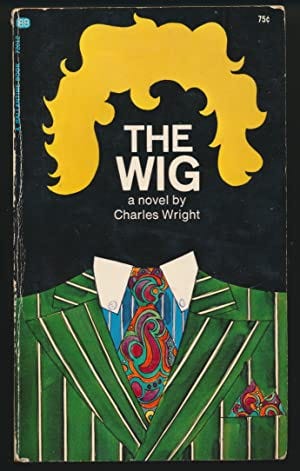On the scale of eternity, everyone flunks the test of time.
The sun will swallow up the earth in about 7.5 billion years, so there’s that. Heraclitus says, “The Sibyl, with raving mouth uttering words mirthless and unadorned and unperfumed, reaches with her voice through a thousand years, thanks to the god (Apollo).” Attributed to Heraclitus as well, the concept of a “Great Year” as a single cosmic cycle has the natural and human cycles playing out their possibilities against its then calculated 10,800-year movement of the sun, moon, and planets into and out of an original position.
Those numbers are nothing compared to infinitude. Most likely, Shakespeare will be scribbles after one or ten Great Years, thanks to human evolution or extinction. Aspiring to artistic immortality provokes Homeric laughter - at most, the gods allow a kind of longevity, as Homer himself would admit despite his nearly three thousand years and counting.
There are other theories of Space-Time of course, but they’re neither here nor there for my current purposes.
The classic artistic intention is to create a work that will last. Whatever ideology or aesthetic motivates an artist, if it’s imbued with a higher conception of art, there comes along with it a necessity to resist contemporary forces that undermine that ideal: artistic integrity is a fundamental issue for the success of such an artist’s aims, with myriad threats and temptations vying to betray an innovative vision. There are exceptions - an artist’s ideology can reject the premises of a higher conception of art, as some great rebels do, and as plenty of avant-garde or anti-canon movements claim they do with more or less consistency. Punk snot dead.
Then ephemera is the ideal (preserved ephemera, though). Or raw deal, purity, or sand mandala non-attachment. Whatever the temporal embrace, resistance is required: to overcome the times, circumstances, adversity; to evade trends and authority; to maintain a true artist’s non-conformism.
Cyril Connolly’s Enemies of Promise is askew interesting to me for how it sidles up to the question of literary longevity with such a seemingly unpresuming time frame: ten years.
He called his shot. The book was first published in 1938 and Connolly had the opportunity to write the introduction to a new edition in 1948, where he describes it as, “a didactic enquiry into the problem of how to write a book which lasts ten years.” In the uncertainty of those times (you’ll notice Enemies of Promise came out at the precipice of World War II), part of the concern was how to survive the next ten years; to think nevertheless how a book might survive or how to survive through books was its own exemplary form of transcending the times.
“Contemporary books do not keep. The quality in them which makes for their success is the first to go; they turn over night. Therefore one must look for some quality which improves with time.”
Precisely in such hopes: the artist must discover that lasting quality and the keys to that quality.
For the best work explodes with a delayed impact.
Enemies of Promise has stayed in print along a course of several revivals: I’m quoting from a 2008 paperback, which itself added a new scholarly foreword to the 1983 University of Chicago Press edition.
Unfortunately for my recurrent theses, that process did not happen magickally (at least not in any way I’m tracing here) - although one might be forgiven for perceiving the alchemical interplay of an intrinsic/extrinsic duality: the quality of the book and the mechanism of revival. The exact quality that keeps a work relevant for a later time is often what kept it from being excitingly “of the moment” in the first place, but how does that shift in recognition occur as practical action?
At some point, people start talking about something that has been overlooked.
What is Connolly’s lasting quality in Enemies of Promise? Details of his advice vary in pertinence to any individual writer. The very question of lasting qualities aligns his subject matter to his hope. Yet, any content can resonate with the ages. Attunement beyond the times reaches through time.
In mind of the unexploded, I’ve been tinkering with some ideas for how the Poetry, Thought, Word Magick milieu might enact its own discovery mechanism - for the benefit of your/our tastes and priorities and loves. I’m interested in art and artifacts already out there that you think need or deserve greater general attention. Is there a book you know should be better known, a musician whose neglect you lament (a song regretfully undersung), astounding cinema that hasn’t been seen? Tell me.
For instance, in the past year, Dennis Leroy Kangalee brought to my attention the work of Charles Wright. Shattering and uncompromising in artistic face-off with a racist society, Wright’s humor was never meant to be conciliatory. He can’t be a liberal banner, but he should be a freak flag. Even though his three novels from the sixties and early seventies - The Messenger, The Wig (pictured here), and Absolutely Nothing to Get Alarmed About - have been reissued just in 2019 as a one-volume collection from Harper Perrenial with introduction by Ishmael Reed, it’s safe to say there’s some missing literary impact here. I would consider Charles Wright the first nominee of the kind of needed rediscovery I’m trying to get at here, but let that be up for discussion.
Reissues and returns to print are part of the mechanics but not the accomplishment, although New York Review Books in particular does effect - on a maximalist, institutionalized level - what I’m attempting to suss out. I’m grateful above all to have come across John William’s Stoner - nothing is more stand-alone. Of course, after 20+ years since its establishment as the book-publishing arm of the New York Review of Books, NYRB’s slews of rediscoveries have created their own style of classic, distinctly NYRB-style discoveries, in accordance with the taste of its founding editor, Edwin Frank. I mean, I thought Ride a Cockhorse was hilarious and, sure, a fun find, but it certainly wasn’t “necessary” (to use an overused and overblown term you see in cliquey small press book blurbs) - its republication wasn’t about rectifying the plight of the undeservedly underappreciated. Now, maybe my conception of testing for what could and should explode has been influenced by an NYRB title, The Dud Avocado - which I haven’t read, so I’m talking about the title itself indeed - but let whatever we come up with be ours, reflective of our passions and concerns, refreshed in our centricity, underground, anti-institutional, idiosyncratic, serendipitous, an outcome of this incidental convergence of inquiry, a happy product of our happenstance here.
Dud-Test: do you have something in mind you think deserves to explode? - is it charged? - is it armed and dangerous? Let’s tap it with a hammer.
Thoughts?
Recommendations?
I’m considering a contest, or ranking, with some sort of reward or celebration, award or venue for attention. Input encouraged.
Here are some rough parameters so far… trying to set up a nominating system
You can nominate yourself or people you know (of course also going way beyond any personal circles, but such is not barred). Restriction: the work has to have been already published or released to the public and at least ten years old - and no more than a hundred. 10 to 100 years old (works from 1923-2013), with the 1923 date coinciding with some rules re public domain.
In keeping with this Substack, I’d like to focus on three categories: one for works of poetry; one for works of philosophy or creative thought; and one that’s sui generis, for any kind of creative work - writing, film, music… all this up for further defining. More on what we can do about that below.
Time and geographical space…
As we think to step out of time (at ten year increments at least), corrective of our temporocentricity, it’s good to know we can make lateral moves (across the globe) to remedy our ethnocentricity. A newsletter blog by Netherlands-based Thomas Plaatsman, Cultural Reads, offers another means of widening our perspective in pursuit of universal values - au courant worldliness across nations, breaking us out of societal-cultural bubbles. Its global recommendations of books, music, and film are of a much broader range compared to what rarities of missed time-crossing works I have in mind for us to identify, but similar in openness of evaluation.
Plus, parallel to valiant resistance against prevailing inputs of the times, Plaatsman’s international scope is a principled countermeasure in response to U.S. cultural hegemony. As an example, yesterday’s Cultural Reads newsletter linked to his “Top 14 Self-Development Books by Non-US Authors You Can Read Right Now” which trips up Horatio Alger by grabbing those bootstraps of quintessentially American self-help and giving them a sharp yank in a different direction.
Cultural Reads’ musical recommendations tweaked my Spotify playlist the first time I read it, with this Malian Pop entry. From Tinariwen, “Toumast Tincha” gets into my bones and from Fatoumata Diawara, “Sowa” gets into my dreams.
Cultural Reads is a bi-weekly newsletter with book, movie & music tips from countries all around the world. If you’re interested in culture, learning, and broadening your horizon – this is for you.
Sign up here to get these tips straight to your inbox.
Figuring out the Rules for a 10-100 Year Works Contest
works 10-100 years old
three categories: poetry, thought, sui generis - any genre or form
What rewards? The purpose is to bring some sort of attention to the winners, since it’s all about identifying works that deserve greater attention for their lasting attributes. What’s enticing? An event, a prize?
What are the nominating procedures? What is out there that you think, “I’m so glad this exists!”; but also, “why doesn’t everybody enjoy this?” - and why isn’t its impact shifting the cultural landscape?
For provisional nominations of works or bringing works up for discussion in their qualifications, please comment on the website or answer this email directly. Same with any suggestions regarding what outcomes we want to achieve, what might be done with regard to bringing attention to any works we might want to celebrate. I’ll gather together what comes in and we’ll figure out where to go from there.
For more intricate questions, to go deeper into rules, logistics, and parameters for qualification, to get to the nitty-gritty of what might be attempted here, for further inquiry into what qualities make for lasting worth, let’s go to the chat.
Feel free to open a new thread and start a discussion or debate.
No need to be strict about it at this point: I hope to start a meaningful conversation about any of this - privately, and/or in the public comments, and/or in the chat.
P.S. It’s no contradiction to say art is also of the present. That’s where and when it’s made. Plus, its modality is presence. Allow me to conclude with something coming out in a couple of days which I hope will detonate on contact.
My singer-songwriter daughter Hero Magnus is releasing a new song this Friday. Please “Pre-Save” it now for free - this adds it to your streaming library right when it drops.
I visited Hero a few days ago during her last semester at Yale. She’s about to head out into the world. She’s sending this song out first.









